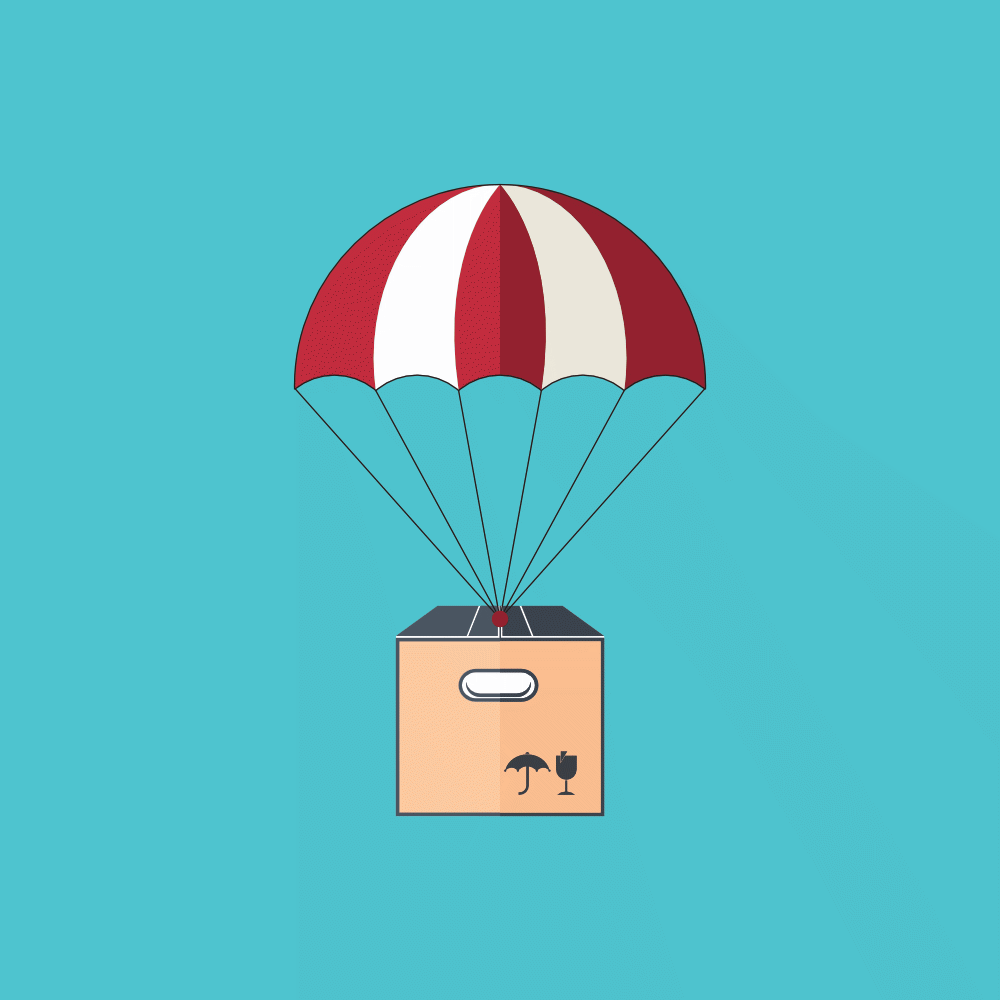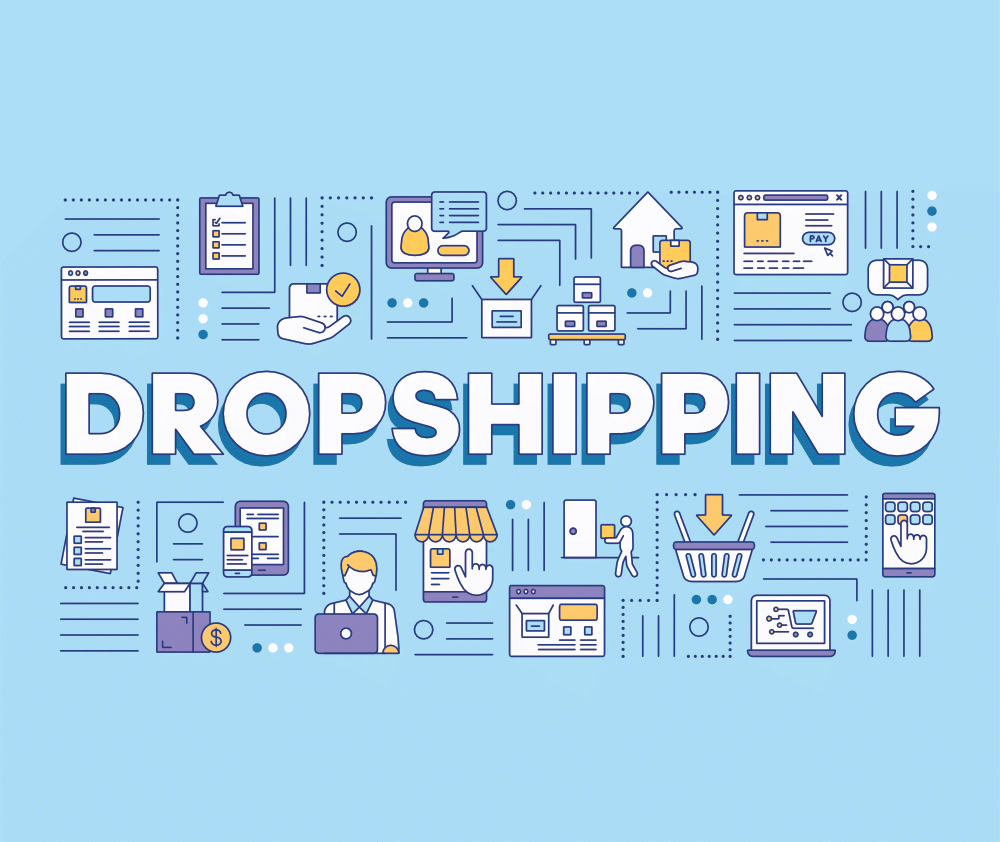What Is Dropshipping and How Do You Make Money?
When starting an online eCommerce business, one of the essential elements is having products to sell. There are three ways to source products for your eCommerce brand:
- Create your product own range and stock it.
- Sell other brands products from a stocked range.
- Dropshipping – for both your own product range and other brands, but do not hold stock.
Dropshipping is often seen as the dream business for creating residual income as it is seen as an automated way to run a business with little or no interaction with the goods themselves. In this blog, we will discuss the latter, dropshipping and hope to offer an unbiased view on what it is, the costs involved, and if you can still profit from it.
[lwptoc]

What Is Dropshipping?
Dropshipping is the term used to describe an eCommerce business that sells products but does not hold stock. This can be products from their own designed and designed range or other brands products, but critically none of the stock is stored or produced directly by the brand.
The most common two types of dropshipping businesses are imported goods, usually via AliExpress and Oberlo, in which the eCommerce store advertises and takes payment for the goods. However, they are shipped from overseas suppliers directly.
The second and the most popular usually comes in clothing brands where a print on demand supplier will sell clothing items to customers based on a pre-set design by the eCommerce store owner, directly to the customer, but they are only created on receipt of an order.
What Costs Are Involved With Dropshipping?
Despite not holding any stock physically, there are still costs involved with dropshipping, such as startup costs and ongoing running costs.
Startup costs:
- Website design – £800-£3000
- Branding – £500-£2000
- Working capital
Ongoing running costs:
- Advertising – £200-£2000 per month
- Website hosting – £30-£300 per month
- Money in the business to cover orders
You will also need to have some starting capital to cover any initial orders via your store. Most dropshipping suppliers will take payment from your account when the orders are placed to service the order. However, most payment handlers will not release funds to your account for at the very least a few days. This means you will need to have some working capital in your business account at all times to ensure the smooth running of your store.

The Pros’s and Con’s Of Dropshipping
Dropshipping is often looked at as a way to escape the 9-5 or run a side hustle to boost your income. There are a few things that you need to take into consideration before you launch a store, so we have created a pro and cons list for you.
Pros:
- Extra income
- Great way to launch a new business without a substantial financial commitment
- No space needed to store products
- Hands off production business
- Suitable for testing the waters on a business idea
Cons:
- You are not in control of quality
- Reliant on third parties
- It takes just as much time and effort as a “traditional business.”
- 100% of the risk is on you – not the suppliers
- Harder to sell on the business compared to a traditional business setup.
You will also need to see proper financial advice from an accountant and or financial advisor on how to handle the income and expenditure of the business itself and the implications of this, such as paying additional tax. You also might want to check for any clauses in your employment contract that prevent you from running a business alongside your current role.
Dropshipping Summary
This blog might come over as a bit negative towards dropshipping. This is because, unlike other digital agencies, we like you to have all the facts when deciding to invest your hard-earned money into any project. Dropshipping is often portrayed as an easy way to make money and completely hands-off when in fact, it can be a risky route to invest in, despite its upsides.
If you get it right, dropshipping can be very profitable and can help you launch a much more profitable and investable business down the line. Put particular emphasis on:
- Choosing the right products
- Effort into inbound marketing & social media
- Attracting return customers with things like email marketing
- Expanding your range as budget allows
Need further advice? Get in touch with us here at Morgan Branding we have a fully dedicated team ready to help you and your business get ahead online. You can get in touch via our contact page or get social with us on Facebook, Twitter, Instagram or LinkedIn!
What we can do to help you:
More From The Morgan Branding Blog
5 Tips For Small Businesses In 2022
5 Tips For Small Businesses In 2022 The pandemic has taken its toll on businesses of all shapes and sizes but more so on micro and small business owners who, in some cases, have had to battle on with little or no support and somehow keep their businesses afloat. As we...
6 Ways Blogging Can Be Beneficial for Your Business
6 Benefits of Blogging for Business Does your business need a blog? What are the benefits for the business if we have a blog? Both are very valid questions and only 2 of many that most business owners will have when deciding if you will invest in a blog for your...
Questions to Ask Before Selecting Your Web Designer
What to Ask Your Website Designer Before Hiring Them If you're looking to hire a web designer to help you with your small business website, there are certain things that you should ask them to ensure that they are a good fit for your business. Here at Morgan Branding,...
Why Is TikTok Removing My Comments?
Why Is TikTok Removing My Comments? As TikTok is becoming more saturated, and more people joining the app, TikTok rolled out a new feature that may be difficult for business owners. [lwptoc]What Can’t I Comment? TikTok now censors your comments if they include certain...
How a Good Logo Can Set Your Business Apart
How a Good Logo Can Set Your Business Apart If you are on the verge of launching your business, then no doubt you have already given your logo a great deal of thought. Perhaps you have already been up and running for some time and are considering a new logo design as...
Is Shopify Bad For SEO?
Is Shopify Bad For SEO? When it comes to setting up an e-commerce site, Shopify is your friend. In fact, Shopify is now trusted by over 2 million site owners to run their business. What Shopify did for e-commerce was to allow people to set up a store, with...
Marketing For A New Year
Marketing For A New Year: Getting Your Business Off To A Flying Start In 2022 Let's be honest - 2021 has been tough. We thought we were entering a year free from Covid, but that didn't really seem to last very long. The chances are that 2022 will be in a similar vein....
How Content Can Grow Your Ecommerce Brand
How Using Content Marketing Can Help Grow Your Ecommerce Brand Are you thinking of using content marketing for your business? Then this is the blog for you. It will cover everything you need to know about content marketing and how to deploy it for maximum effect for...
Can You Use Shopify On WordPress?
Can You Combine Shopify & WordPress To Reap The Rewards Of Both? Content management systems seem to be popping up at a rate of knots over the last ten years or so, but two names stand head and shoulders above the rest - WordPress and Shopify. Both have their pros...







